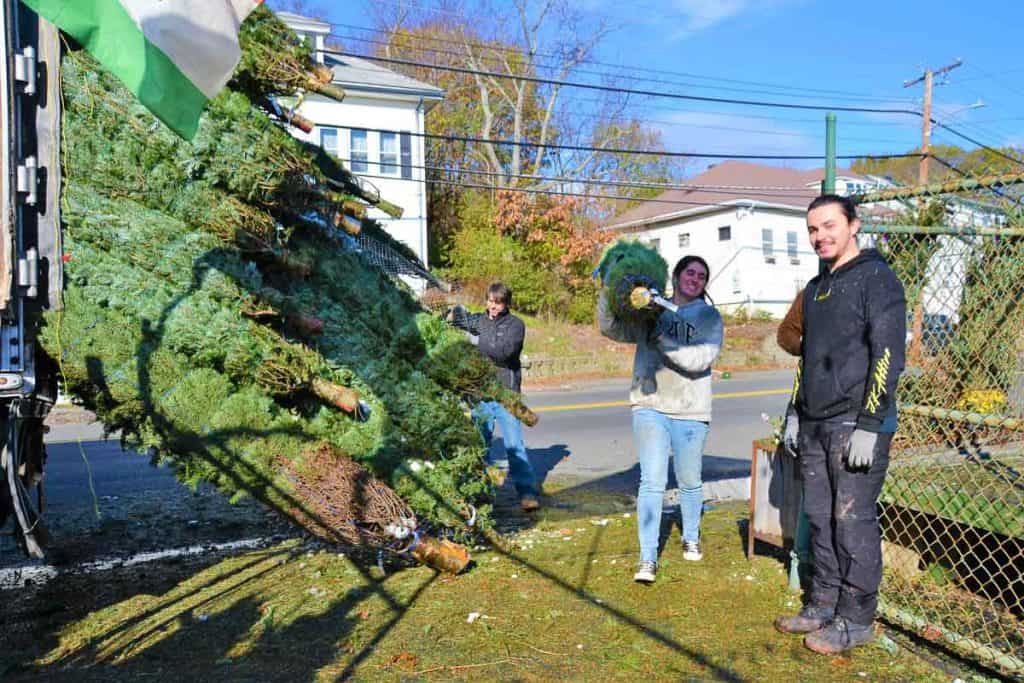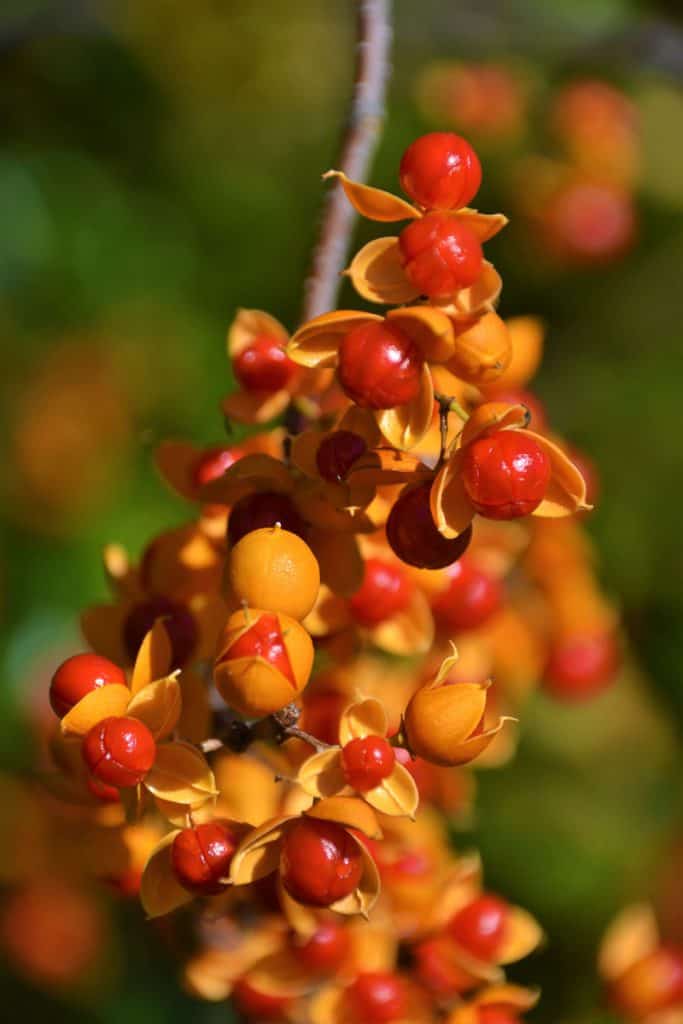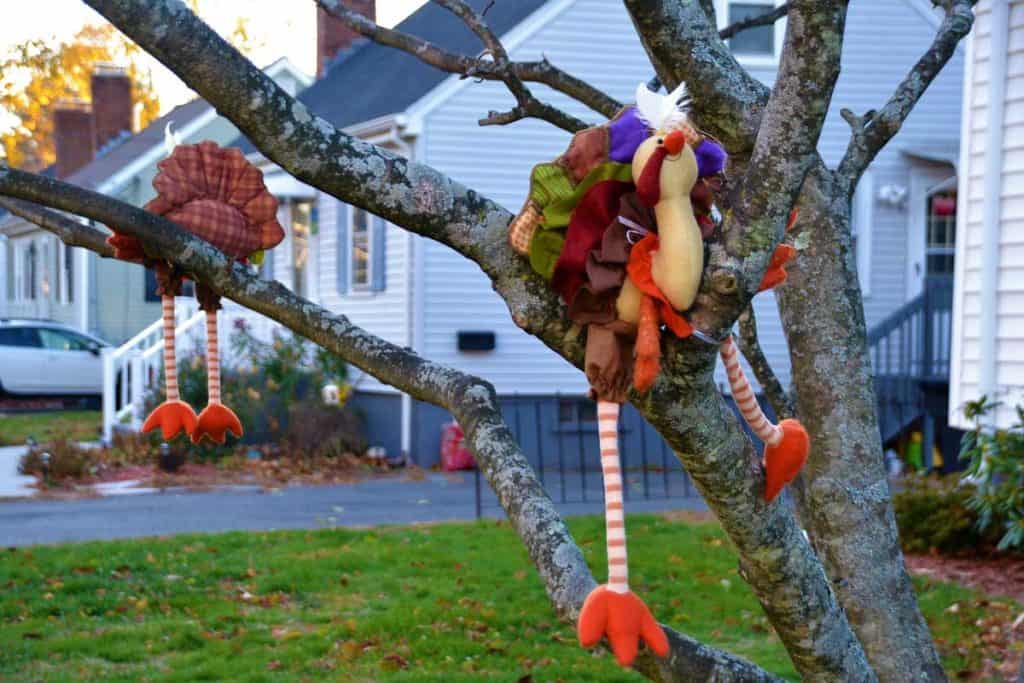Here’s what’s blooming in town this week to make your walks more enjoyable
Happy Thanksgiving, Saugonians! I hope everyone will enjoy their harvest feast. Traditional menus are full of fall season vegetables, especially root vegetables that can be harvested after frost and stored for winter: parsnips, beets and turnips, for example. Some of these are things we seldom eat at any other time, but which form an essential part of memories around our grandparents’ Thanksgiving table.
Although wintry temperatures have arrived, our gardens are still sporting a few fall flowers. The afternoon sun still shines on red, yellow and occasionally orange crabapples still clinging on trees around town. Turkeys have been popping up in every neighborhood – not all of them real ones! One of the most creative displays is one with fabric turkeys sitting in a magnolia tree on Forest Street. Meanwhile, at a traffic island on the corner of Ballard Street and Lincoln Avenue, a stack of hay bales is already looking forward to spring, as the uppermost bale is sporting a new crop of bright green grass.
We all know what is coming right after Thanksgiving! Small forests of conifers are appearing at garden centers and other places as Christmas approaches. At work I have been surrounded by balsam fir (Abies balsamea) wreaths, swags, centerpieces and cemetery baskets, immersed in the holiday fragrance. Because of its scent, balsam fir and the closely related Fraser fir (Abies fraseri) are far and away the most popular tree species in our part of the country for Christmas trees and other live decorations. I saw the truck of trees being unloaded at Little Brook Florist and Garden Center on Lincoln Avenue, and Huberman’s Greenhouses on Vine Street also has trees and decorations ready for the season. Decorations are starting to go up all over town.
As more leaves fall, we can see farther into the woods, and certain brightly colored fruits become more noticeable. Among the woody vines which become more noticeable in fall is Oriental bittersweet (Celastrus orbiculatus). This is an invasive, exotic vine that has spread extensively in New England and much of the country, especially in disturbed areas and woodland edges. Our native bittersweet (Celastrus scandens) produces far fewer fruits and has been outnumbered by the invasive species so that now even bittersweet vines you find deeper in the woods are usually the invasive kind. The seeds are frequently spread by birds, which eat the fruits and then “plant the seeds surrounded by fertilizer” somewhere else. This is why you may find them coming up in your compost pile or other locations in your garden, even if there had not been vines nearby before.
Once they have been growing for a dozen years or so, bittersweet vines can become very heavy and sometimes break the branches of trees. Since this vine climbs by twining around tree trunks, it also can strangle trees by preventing the trunks from growing wider. Bittersweet vines can form dense thickets and crowd out other species in areas that are not vigorously maintained. I have seen it climb telephone poles and in other ways wreak havoc on the environment.
Bittersweet fruits are very colorful and were originally introduced in the United States as an ornamental plant. They are poisonous to mammals but do not seem to harm the birds at all. Bright orange-red berries are encased initially in a yellow-orange “shell,” which opens when the fruit is completely ripe. In the past, bittersweet was a popular Thanksgiving and harvest time decoration, but using it on your doorway or disposing of it in your compost will likely lead to unwanted seedlings popping up in your garden or your neighbors’ garden, as birds may perch on your door wreath to devour the fruits. Indoors, they are less likely to be accessible to wild birds as long as they are disposed of in a way that ensures they will go deep into the landfill. Once you have oriental bittersweet growing in your garden it is difficult to control, so it is wise to try to keep it from getting established in the first place.
Editor’s Note: Laura Eisener is a landscape design consultant who helps homeowners with landscape design, plant selection and placement of trees and shrubs, as well as perennials. She is a member of the Saugus Garden Club and offered to write a series of articles about “what’s blooming in town” shortly after the outbreak of the COVID-19 pandemic. She was inspired after seeing so many people taking up walking.







